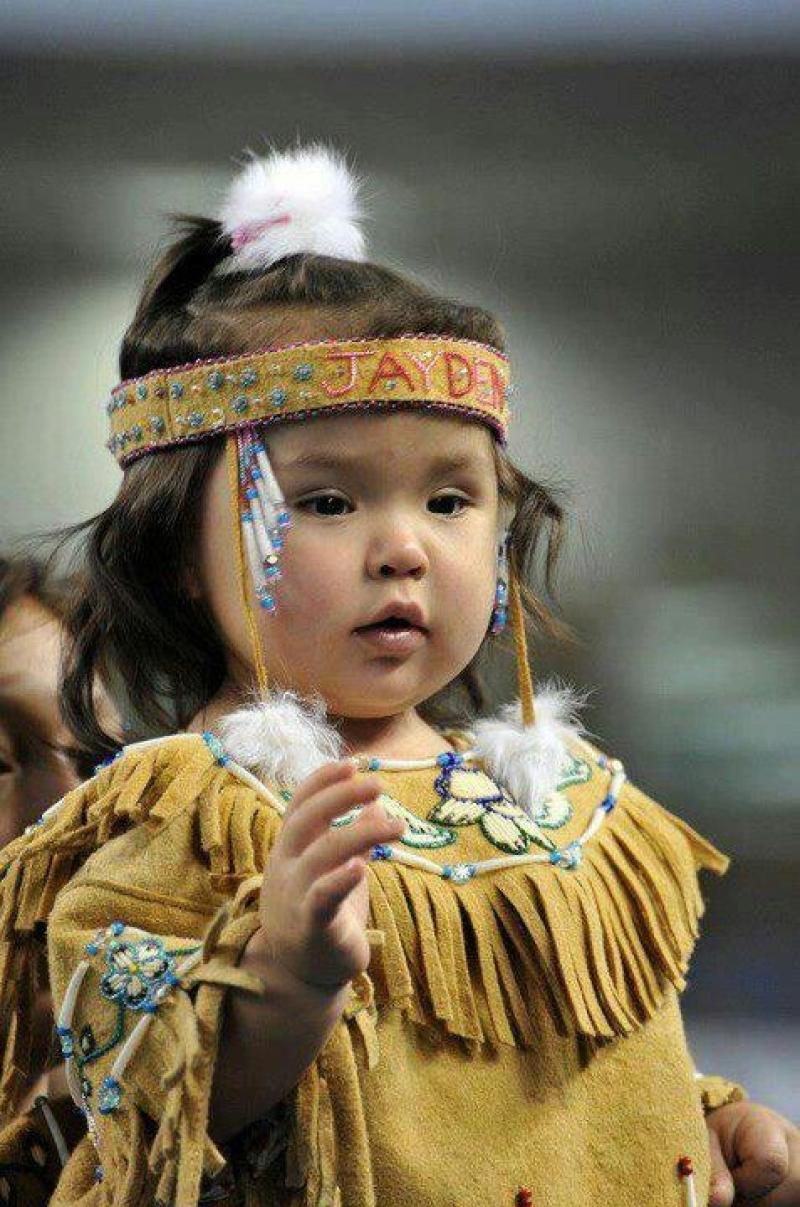DNA from Ice Age Baby Uproots Native American Family Tree


DNA analysis of a six-week-old baby girl, buried some 11,500 years ago in what is now Alaska, has identified her as a member of a previously unknown Native American population. The discovery strongly supports the theory that the Americas were settled by people from Siberia, and presents scientists with the genetic key to better understanding how ancient humans migrated to North America from Asia.
Since 2006, archaeologists have been excavating the site known as Upward Sun, in the Tanana River Valley in central Alaska, where short-term human settlements seem to have popped up periodically over thousands of years. In 2010, a team from the University of Alaska Fairbanks found human bones there , including the cremated remains of a three-year-old child on top of an ancient hearth.
When they later dug into the hearth, scientists discovered the remains of two infants: a six-week-old girl they called Xach’itee’aanenh T’eede Gaay, or “sunrise girl-child” in the local dialect, Middle Tanana; and a younger child, possibly a fetus, whom they dubbed Yelkaanenh T’eede Gaay, or “dawn twilight girl-child.”
Now, as part of a new study published this week in the journal Nature , an international team of archaeologists and geneticists has reconstructed the entire genome of the older girl. At some 11,500 years old, hers is the second-oldest human genome found in North America. While the scientists expected the baby girl’s DNA to belong to one of the two known branches of Native American ancestry (northern and southern), they instead found a different genetic code, which marked Xach’itee’aanenh T’eede Gaay as a member of a previously unknown lineage.
“We didn’t know this population existed,” Ben A. Potter, a professor of anthropology at the University of Alaska Fairbanks and one of the lead authors of the new study, said of the study’s findings .
Potter and his co-authors believe the newly discovered group, the Ancient Beringians, split off from other Native American ancestors some 20,000 years ago, around the time many scientists believe the first humans made their way from Asia to North America. Beringia is the name used to refer to Alaska, the tip of Siberia and the land bridge that connected them during the last ice age.
Members of the archaeology field team watch as University of Alaska Fairbanks professors Ben Potter and Josh Reuther excavate at the Upward Sun River site. (Photo courtesy of Ben Potter/University of Alaska Fairbanks)
It’s unclear where exactly the split occurred, however. Potter suggests the Beringians separated from the other Native American ancestors before they left Siberia, pointing out that there’s little evidence people were living in Beringia 20,000 years ago. But his co-author Eske Willerslev, from the University of Copenhagen, believes humans traveled from Asia in a single wave of migration, then split apart shortly after they arrived.
While the Ancient Beringians settled in the north and grew increasingly isolated, the rest of the migrants are thought to have traveled south past the ice sheets, where they split into the two known groups of Native American ancestors around 15,700 years ago.
Descendants of the southern branch of the genetic family include most Native American groups in the United States, and all indigenous peoples in Central and South America. Both the controversial Kennewick Man , found in Washington, and the Anzick Child , which at 12,700 years old is the oldest human genome ever found in the Americas, are believed to belong to the southern group.
Like many communities in Canada and some in the United States (including the Navajo and Apache), the Native Americans who now live in the Upward Sun area are descended from the northern branch of the genetic family. The new study suggests their ancestors returned to Alaska from further south at some point, and may have replaced or absorbed the Ancient Beringians.
Though the details of their fate are unknown, the discovery of this lost population sheds new light on the earliest human inhabitants of North America and how they made their way across the continent.
“Before this girl’s genome, we only had more recent Native Americans and ancient Siberians to work out the relationships and time of divergence,” Willerslev told BBC News . “But now we have an individual from a population between the two, and that really opens the door to address these fundamental questions.”




I'm sticking with my nookomis and misnomis (grandma and grandpa) very wise conclusion.
''We have always been here''....
...and the more we learn, the more plausible this statement becomes.
We are slowly moving past the blinded dogma of the foundation set in the 1800s which ruined the lives of many good scientists who applied obvious disciplines to lead to now obvious conclusions, yet were laughed out of their professional careers.
The western flood, just to name one example. Now they are scratching their heads and thinking maybe there were 80 or so of them. Again, just one example.
To the point here:
I (not that I am anybody, though I did spend a night in a Holiday Inn Express once) and many others call BS on that bolded sentence.
My favorite geologist, Professor Nick Zentner, CWU, once just laid it out there and drove it home. Earth scientists are stove pipe in their thinking. The do not connect any dots. They where blinders, which limits the ability to see the big picture.
We have climate scientists using NASA data telling us the seas have risen 300ft since the last Ice Age glacial maximum. Does that sink into the heads of the archeologists and anthropologists? I don't know...? Especially when I see statements like the above.
Probably recognized is that Beringia is probably one of the most affected areas from sea rise. It was a big, wide expanse of land mass. Now it is under water.
Now, let's switch to my favorite biologists/evolutionary anthropologist, Alice/Alison Roberts, PhD University of Birmingham, UK. She likes to go beyond the stove pipes. I have never heard her on this specific topic, but I can hear her voice resonating in my head "of course, people travel along the coast". Others have said as much, but I like to give credit to Alice when I can.
Well, the coast has been been under for thousands of years. There are megalithic structures under water. How can that knucklehead from University of Copenhagen make the bold statement of there’s little evidence people were living in Beringia 20,000 years ago when no one is looking where any kind of logic would tell us where the evidence happens to be?
Statements must be qualified with the known constraints rather than throwing right out there for mass consumption and rationalized based on ignorance...
...off soap box.
Thanks for the article.
That has always been my point. Dogma and making assumptions that simply don't jive with reality seem to be quite commonplace.
I'm gonna stick with ''we've always been here''...
Me too.
This slowly unfolding story is great fun. It was only a few years ago that Native American occupation was thought to be only a few thousand years old. Now.....
It is great fun. All the different discoveries keep setting back the date. There are some discoveries in Califnoria, Mexico, Central and South America that are thousands of years older then these remains..
What will be the next great discovery!!!!!
This is fascinating.
Hi Veronica, yes indeed it is quite fascinating. Each new discovery opens more questions than it answers.
That is the fun behind discoveries. Trying to answer all those questions. I love reading this type of article & trying to keep up with all the new things that pop up.
Alaska and Canada, once thought to be barren of this type of discovery, have in the last 5 years or so, provided enormous amount of discoveries and this is but one of them.
The oldest know DNA was discovered in the northern Yukon...It was a 700,000 year old horse frozen in the tundra.
I did not know that. Time for me to do some reading. Any suggestions to good articles?
I know that they have begun working in Alaska & Canada on digs, but have not heard much in the way of what is found. I will be digging deeper.
Thank you.
That was very interesting. Thank you again.
Here is a link to a really great site...It keep abreast of all the discoveries world wide...A treasure trove of information.
Western Digs is another great site for this type of information.
Oh Boy!!! I have some weekend reading. Thank you.
Always nice to see further info on the genetic trail of my Apache ancestors.
You are living in the ancestral land of the Apache, Doc.
Yep. In my case, SE Arizona and New Mexico and on into Mexico for the Mescalero Apache Tribe.
I have some friends up north of you with the White Mountain Apache.
It is truly a fascinating find. It also brings about the concept of "the more we know, the more we don't know."
Isn't that the truth RW.
Hopefully the study of the other child and fetus reveal more information.
I agree the possibilities are endless, Freefaller.
I am looking forward to what they find out from these remains. I am not sure where it will lead, and I am dying to know about the migration eastward.
I'm sure that you are..LOL...You could be part of the lost tribe, ya know.
So you're a Russian
LOL, not really but I can see it from the front of my Tipi, Katrix.
Kavika - you're in an area of fabulous finds.
There is still one arch site in Broward County at the edge of a Mangrove swamp and, of course, the Vero Man in Vero Beach and the Melbourne arch sites.
I had a blast working at Patrick AFB in Melbourne for 12 years. At the Cape, we had to shutdown an expansion project by FP&L as a result of finding middens and burial sites. Michael Haney, the AIM NAGPRA program manager, and I conducted a reburial ceremony at one of the sites. The AF, with the assistance of Florida State (Jerry Milianich), made FP&L develop a training video for all their crews conducting outside development. If I'm not mistaken, that video/training film has been updated since 1995.
Yup, the area is a treasure trove of finds...I'm looking forward to visiting all of them.
Thanks for the links.
So when will you be moving back to Melbourne?
Still talking with the Boss - we'll see what she sez.